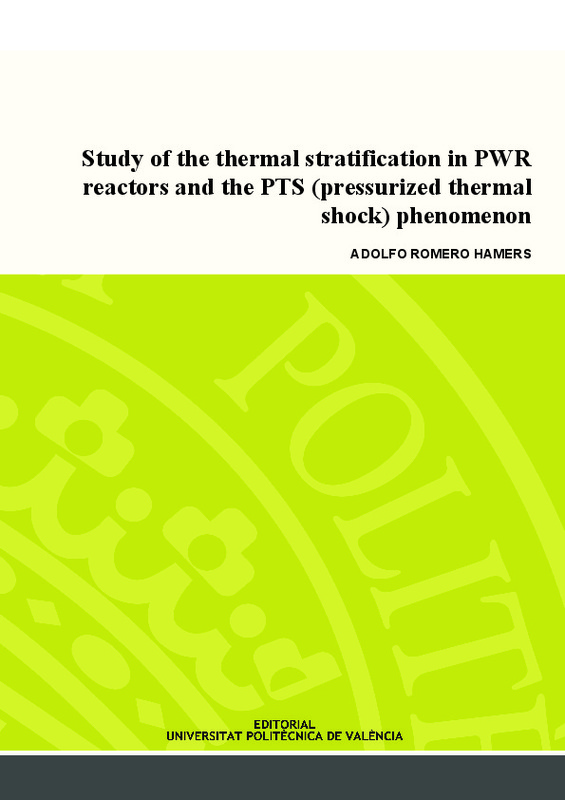|
Resumen:
|
In the event of hypothetical accident scenarios in PWR, emergency strategies have to be mapped out, in order to guarantee the reliable removal of decay heat from the reactor core, also in case of component breakdown. One ...[+]
In the event of hypothetical accident scenarios in PWR, emergency strategies have to be mapped out, in order to guarantee the reliable removal of decay heat from the reactor core, also in case of component breakdown. One essential passive heat removal mechanism is the reflux condensation cooling mode. This mode can appear for instance during a small break loss-of-coolant-accident (LOCA) or because of loss of residual heat removal (RHR) system during mid loop operation at plant outage after the reactor shutdown.
In the scenario of a loss-of-coolant-accident (LOCA), which is caused by the leakage at any location in the primary circuit, it is considered that the reactor will be depressurized and vaporization will take place, thereby creating steam in the PWR primary side. Should this lead to ¿reflux condensation¿, which may be a favorable event progression, the generated steam will flow to the steam generator through the hot leg.
This steam will condense in the steam generator and the condensate will flow back through the hot leg to the reactor, resulting in counter-current steam/water flow. In some scenarios, the success of core cooling depends on the behaviour of this counter-current flow.
Over several decades, a number of experimental and theoretical studies of counter-current gas¿liquid two-phase flow have been carried out to understand the fundamental aspect of the flooding mechanism and to prove practical knowledge for the safety design of nuclear reactors. Starting from the pioneering paper of Wallis (1961), extensive CCFL data have been accumulated from experimental studies dealing with a diverse array of conditions
A one-dimensional two field model was developed in order to predict the counter-current steam and liquid flow that results under certain conditions in the cold leg of a PWR when a SBLOCA (small break loss of coolant accident) in the hot leg is produced.
The counter-current model that has been developed can predict the pressure, temperature, velocity profiles for both phases, also by taking into account the HPI injection system in the cold leg under a counter-current flow scenario in the cold leg. This computer code predicts this scenario by solving the mass, momentum and energy conservation equations for the liquid and for the steam separately, and linking them by using the interfacial and at the steam wall condensation and heat transfer, and the interfacial friction as the closure relations.
The convective terms which appear in the discretization of the mass and energy conservation equations, were evaluated using the ULTIMATE-SOU (second order upwinding) method. For the momentum equation convective terms the ULTIMATE-QUICKEST method was used.
The steam-water counter-current developed code has been validated using some experimental data extracted from some previously published articles about the direct condensation phenomenon for stratified two-phase flow and experimental data from the LAOKOON experimental facility at the Technical University of Munich.
[-]
|







![MS Word file [Word]](/themes/UPV/images/msword.png)


